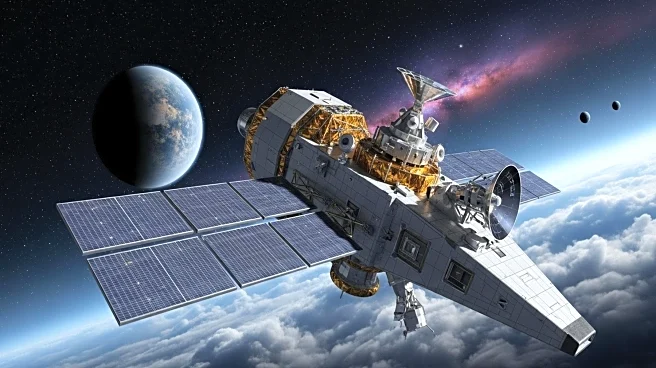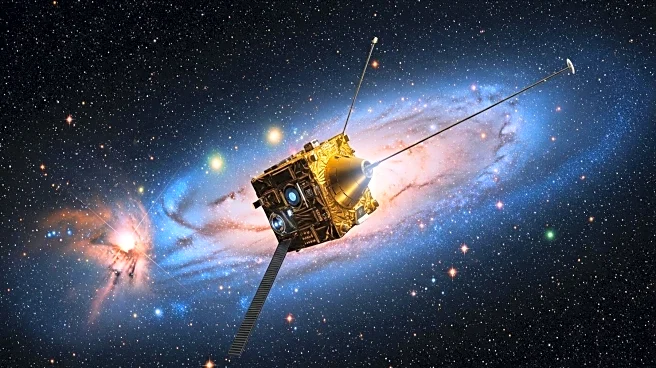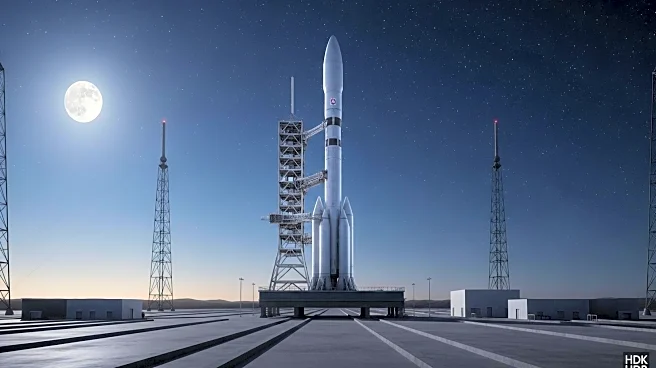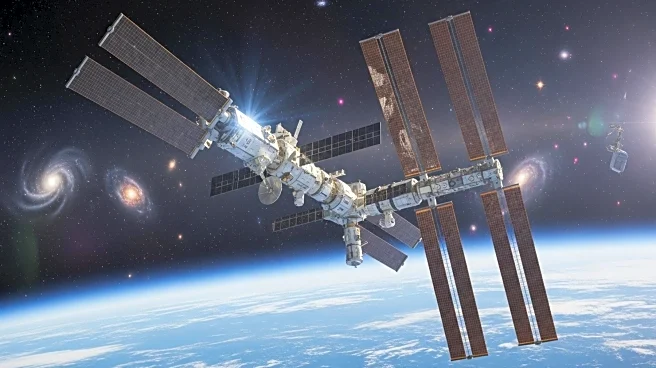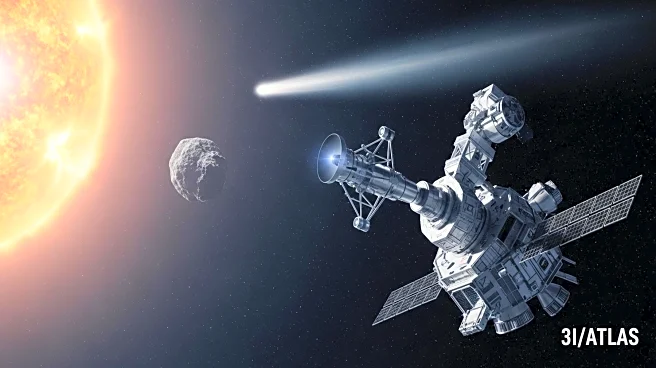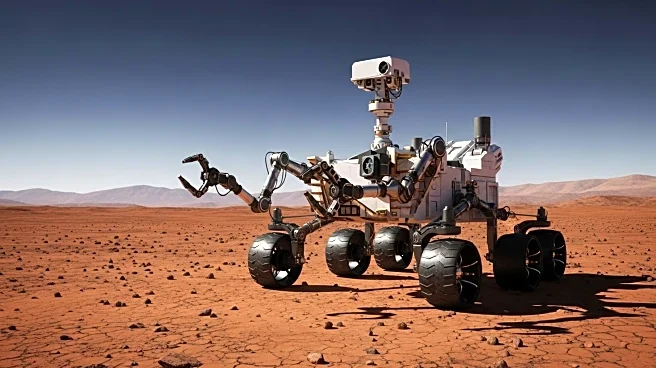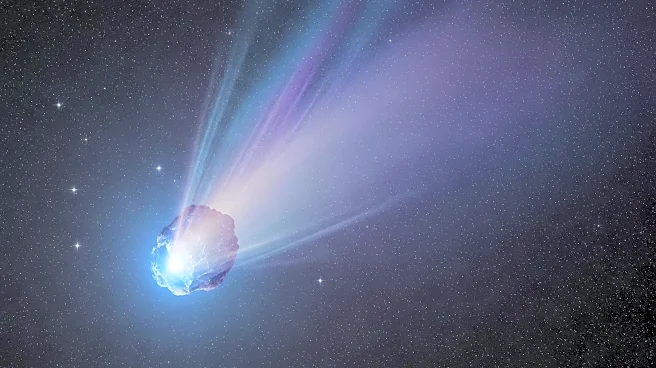What is the story about?
What's Happening?
NASA has launched the Interstellar Mapping and Acceleration Probe (IMAP) mission to study the heliosphere, a protective bubble created by the solar wind that shields the solar system from cosmic radiation. IMAP will investigate the solar wind's formation and its interaction with interstellar space, aiming to map the heliosphere's boundaries with unprecedented detail. The mission includes 10 instruments designed to fill gaps in existing heliosphere maps and improve predictions of space weather, which can affect communications, power grids, and satellite operations.
Why It's Important?
Understanding the heliosphere is crucial for predicting space weather, which poses risks to astronauts and can disrupt technological systems on Earth. IMAP's detailed mapping of the heliosphere will enhance scientists' ability to forecast solar storms and their potential impacts. The mission's findings could lead to better protection strategies for astronauts and infrastructure, highlighting the importance of space weather research in safeguarding modern society.
What's Next?
IMAP will reach its orbit about 1 million miles from Earth in three months, where it will begin capturing real-time observations of the solar wind and measuring particles from the sun. The mission will also collect data from interstellar space, contributing to a comprehensive understanding of the heliosphere's structure and function. Scientists will use IMAP's data to refine models of space weather and improve forecasting capabilities.
Beyond the Headlines
The IMAP mission represents a significant advancement in heliophysics, building on decades of research by previous missions like Voyager and IBEX. By providing high-resolution images and data, IMAP will deepen our understanding of the heliosphere's role in protecting the solar system. The mission also highlights the collaborative efforts between NASA and other agencies in addressing complex scientific questions.
AI Generated Content
Do you find this article useful?
